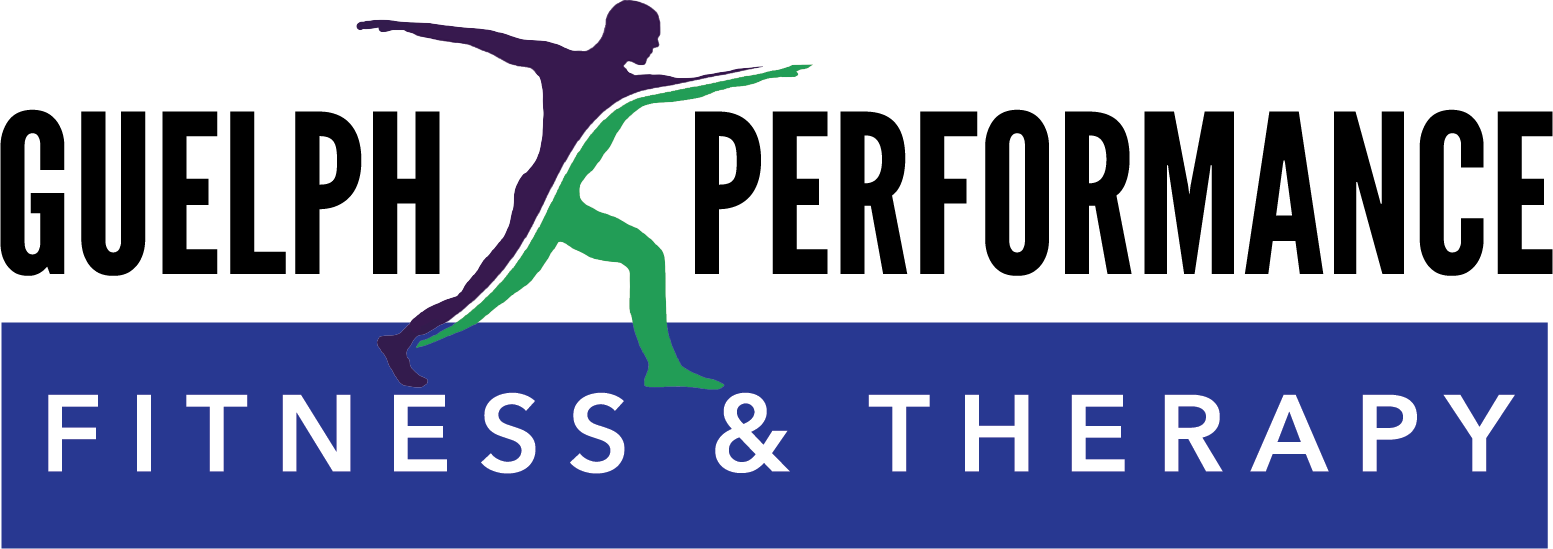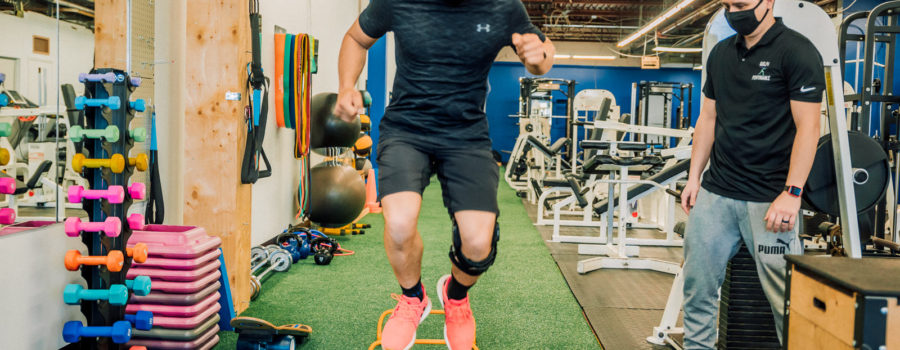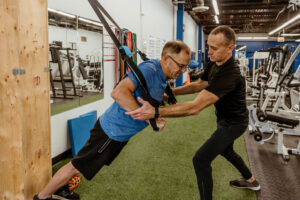Not sure if you need a brace? Athletic Therapists actually spend a lot of time learning how to support injuries with things like tape (often the only option in the field) and bracing.
As I work with more and more teams, I’m learning that there is a gap in knowledge with a lot of athletes and coaches about when taping and bracing are appropriate. This post is to answer bracing FAQs, what types are available, and when to use a brace.
There are two major types of orthopedic braces. Functional Braces are worn by an athlete during activity, and Non-Functional Braces are designed to be worn only during recovery.
Two examples of non-functional braces are a range-limiting brace with stops to prevent a joint from moving through full range (often prescribed post-surgery to protect a graft), or dynamic range braces designed to improve range, often post-cast or post-immobilization.
Other braces like carpal tunnel braces, plantar fasciitis splints, or finger immobilizers are worn while you sleep. Normally, surgeons and occupational therapists will prescribe this type of brace.
Functional and Athletic Braces
Functional braces are a little more complicated since there are so many different brands, types, and uses for each body part!
Let’s start with a few ground rules:
1: Bracing is not a replacement for rehab. If you need a brace you also need some sort of treatment. Your treatment could consist of a 10-minute exercise routine you complete at home every day, or it could include regular visits to your Athletic Therapist. Never just strap on your brace and assume your injury woes are over!
2. Braces are specific to injured structures. Not all braces are equal. In the same way, that not all ankle sprains are the same!
Please consult with your Athletic Therapist to ensure that you are purchasing the correct type of brace for your injury, and more importantly, that it fits well and you are using it correctly.
3. Braces do not make you invincible! Even with a brace, you are still at risk for re-injury or aggravation. Please see #1 — this will help you avoid re-injury as you return to sport! The rule of thumb with braces is that they will not prevent an injury, as they do not alter the external forces applied to the joint, but they MAY reduce the grade of your injury (i.e., a micro-tear instead of a partial thickness tear of a ligament).
Categories of Braces
A custom brace is made according to specifications sent to the manufacturer, such as your specific injury type, your measurements for a perfect fit, and sometimes your sport limitations (i.e. needs to fit above a ski boot). These are the most supportive braces, and also the most expensive. The two most common custom braces are knee osteoarthritis unloader braces, and Knee Ligament braces (i.e., ACL Braces). They are usually made of light composite material with fabric and Velcro straps.
Pros: Best possible fit, provides the highest level of support, and usually comes with a very comprehensive manufacturer warranty
Cons: Custom jobs are very expensive but are usually covered by insurance plans. May take up to a week to order and manufacture.

A customizable brace has components that a therapist can alter to fit you better. It may have stays that can be form-fitted to your injured joint, strapping that can be altered to fit, or thermoplastic sheets that are heated and molded to fit your needs.
Pros: It May fit better than an off-the-shelf brace, and is less expensive than a custom brace
Cons: Difficult to find, not as common as other types of bracing, and has a margin of error depending on the practitioner applying the modifications
An off-the-shelf brace is the most common and is one that you can buy yourself at many retail locations or order through your Athletic Therapist. There are many different sizes and types of braces manufactured for each type of injury.
Pros: Cost-effective, and easily replaceable. This is useful if you only need a brace for a short time. Lots of options to choose from.
Cons: May not apply an adequate amount of support for certain injuries. Incorrect use is relatively comomon.
Types of off-the-shelf functional braces
There are a few different types of braces that your Athletic Therapist might recommend for your injury.
Sleeves and compression wear
Compression is an important part of recovery, performance, and pain reduction. There are many different options that can provide compression to large body parts (compression shorts, calf or knee sleeves) or to specific areas (golfers elbow compression band).
Common applications of compression wear include:
- Muscles Strains (pulls) or contusions (bruises)
- Chronic inflammation (golfers or tennis elbow, patellar tendinitis)
- Chronic or acute swelling (meniscus irritation or PFPS)
- Improved proprioception post injury
- Pain reduction / improved recovery post exercise
Range reducing braces
These are braces that have some sort of rigid strapping, or metal/plastic stays. Range reducing braces reduce certain rages of certain joints. Unlike the non-functional braces, theses braces will not reduce range so much that you are unable to complete your activities. If you require that much support, you likely are not ready to return to sport!
Common range reducing braces include:
- Ankle braces following an inversion or eversion sprain
- J-Brace for the patella to reduce PFPS or subluxation
- MCL or LCL knee braces
- Thumb spikas
- Hyper-extension reduction for knee or elbow
- Wrist flexion or extension braces
- AND SO MUCH MORE!
Uses of Braces
One of the major cons of an off-the-shelf brace is that it is very easy to use incorrectly. We use braces as a compliment for rehab and return to sport, and in most cases you shouldn’t need to use it forever!
You and your therapish can overcome your injury, often through proper rehab to strengthen the structures around your injury. Your therapist may recommend weaning out of a brace after a certain amount of rehab, or that you only use the brace in especially risky situations.
A brace also can wear out after use, or even ‘wear-in’ to a certain athlete. This means you should never share your brace, or give it to someone else when you’re finished with it. You should also inspect your brace frequently to make sure it’s not time to replace it. If you are wondering if your brace is still working for your joint, bring it in for a checkup!
You should also not use your brace to prevent injury.
This is actually a very dangerous practice in most situations as it allows the muscles surrounding the joint to become weaker and actually increase the risk of injury, even if the athlete is wearing the brace! If you would like added protection, consult with your Athletic Therapist to see what else can be done to prevent injury, including correct footwear, proper warm-up and cool down techniques, and of course preventative exercises!
Sometimes preventative bracing is indicated, but please consult with your AT before making this decision. You can book a no-obligation consultation with one of our Therapists if you would like to learn more!




